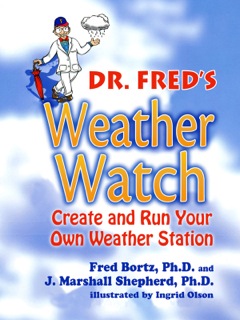 Rain: A Natural and Cultural History by Cynthia Barnett
Rain: A Natural and Cultural History by Cynthia Barnett
Reviewed by Dr. Fred Bortz
See other reviews at the Science Shelf Book Review Archive
This review originally appeared in The Dallas Morning News and is the copyrighted property of Alfred B. Bortz. Individuals may print single copies for their own use. For permission to publish or print multiple copies of any of the materials on this site, please contact the author by e-mail.
 Discover more about Rain: A Natural and Cultural History at Amazon.com.
Discover more about Rain: A Natural and Cultural History at Amazon.com.
“I, Rick Perry, Governor of Texas,… do hereby proclaim the three-day period from Friday April 22, 2011, to Sunday, April 24, 2011, as Days of Prayer for Rain in the State of Texas.”
Thus at a time when more than 8000 wildfires burned across the Lone Star State, destroying more than 400 homes, engulfing 1.8 million acres, and bringing about numerous business failures, the governor responded to a drought that rivaled the 1930s Dust Bowl by calling for Easter weekend prayers.
Environmental journalist Cynthia Barnett, who highlights that proclamation in the opening of a chapter called “Praying for Rain” in her new book, Rain: A Natural and Cultural History, was not criticizing Rick Perry’s personal faith. Her concern was the rejection by a Presidential candidate of the findings of his state’s leading atmospheric scientists who declared that human-caused global warming was exacerbating their state’s already difficult situation.
The political controversy over global warming and its cause persists despite an overwhelming scientific consensus. Although that is not Barnett’s central theme, it echoes in the background throughout the book and returns dramatically at the end.
In less skilled hands, that gloomy sub-theme could doom the book to failure. But Barnett never loses her readers as she weaves together a compelling set of human tales that carry them through millennia and around the world, often in vivid and lyrical prose and leavened with humor.
Rain, usually in tales of flood or scarcity, is part of the central narrative of every culture as well as many of their everyday conversations. “With its hurly-burlies and nor’easters,” Barnett writes in a chapter about meteorologists and other weather watchers, “rain’s eccentric vocabulary connects to the soggy literary landscapes of Ireland and England: Jonathan Swift is credited with the earliest published version of ‘raining cats and dogs’ in 1738, though an English dramatist named Richard Brome had his dialogue raining ‘Dogs and Polecats’ a century earlier.”
Those phrases, she continues in a long paragraph tracing vocabulary around the world, “seem practically ordinary compared with ‘raining young cobblers’ in Germany. It rains shoemakers’ apprentices in Denmark, chair legs in Greece, ropes in France, pipe stems in the Netherlands, and wheelbarrows in the Czech Republic…. Afrikaans-speakers have a version that rains old women with knobkerries (that would be clubs),… and the Spanish: esta lloviendo hasta maridos–it’s even raining husbands!…”
Those colorful colloquialisms are no doubt in the mind of readers in the last section of the book where they encounter a chapter on “Strange Rain.” The chapter features anecdotal and documented instances of frogs or fish plopping from the sky, as well as colored rains. In that chapter we meet one of the book’s many colorful characters, Charles Hoy Fort, who gained minor fame in the early twentieth century for his books of oddities.
“Fort spent years digging up reports of strange rain,” Barnett notes. “He would meticulously source his weird findings…that corroborated rains of toads, frogs, snakes, eels, spiders, stones, pebbles, salt, cinders, coal, and gelatinous goo.”
But that chapter is not all about natural curiosities. It leads up to the story of how acid rain caused by human activity led an environmentally conscious U.S. Congress to enact the Clean Air Act of 1970. Still, as Barnett notes, the world’s environmental problems are hardly solved. “If Fort is right that society shall be judged by the health of its frogs, we’re in for a harsh adjudication. Frogs have survived in more or less their current form for the past 250 million years…. Today they are vanishing…. The rain-loving little bioindicators are definitely trying to tell us something.”
In a brief but pointed final chapter, Barnett describes the political obstacles we face in responding to the challenges of climate change, particularly criticizing powerful Oklahoma Senator James Inhofe, whose fundamentalist religious position on climate and his “sense of duty” to the oil and gas industry stands in the way of action.
Barnett’s epilogue is a quiet call to action. Written as a travel essay, it takes readers to a resort that celebrates the rain in India’s state of Meghalaya during monsoon season. But there, as in most locations of the world, previously unusual and extreme weather conditions have become almost commonplace. The historically rain-cooled region is sunny, hot, and oppressive. Barnett titles that epilogue “Waiting for Rain.”
Physicist Fred Bortz is the author of nearly thirty books for young readers, including the newly revised  Dr. Fred’s Weather Watch: Create and Run Your Own Weather Station, coauthored by the host of TWC’s “Weather Geeks” program, Prof. J. Marshall Shepherd.
Dr. Fred’s Weather Watch: Create and Run Your Own Weather Station, coauthored by the host of TWC’s “Weather Geeks” program, Prof. J. Marshall Shepherd.